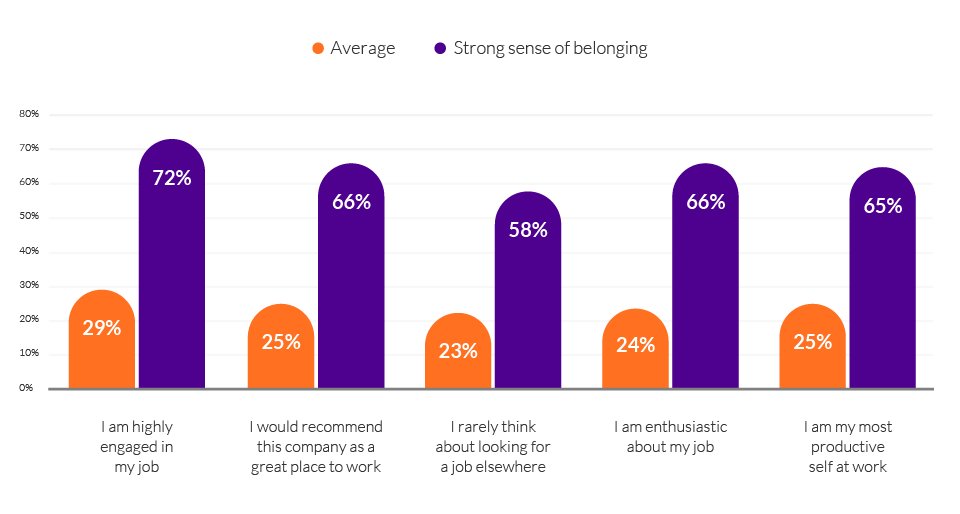How large organizations are falling behind on employee engagement

This resource is brought to you by:
Topics Covered:
Employee engagement
Why are large organizations struggling with engagement?
If your company has 10,000+ employees, you face a unique challenge: keeping your workforce engaged, connected, and committed. Research from Achievers Workforce Institute reveals a concerning trend — engagement for large organizations is declining, leading to lower belonging, retention, and morale.
Why is it so hard to keep employees engaged at scale? And what can you do about it?
Belonging is the missing piece. Employees who feel welcomed, known, included, supported, and connected are far more likely to stay, contribute, and thrive. But scaling belonging in a large organization isn’t easy — it takes the right strategies, tools, and leadership commitment.
Why engagement for large organizations is falling behind
Employees at large organizations are 19% less likely to feel engaged and 29% less likely to feel included. Even more concerning, only 15% feel their unique background and perspective are valued.
Why does this matter? Because low engagement leads to low morale, low productivity, and high turnover — putting your organization at risk.
The latest research from AWI reveals why large companies are struggling to engage employees — and what HR leaders can do to close the gap. Learn how career growth, work flexibility, and recognition frequency impact engagement and what strategies can help you turn things around.
Why belonging matters
When employees feel a strong sense of belonging, they’re not just showing up — they’re invested. They feel connected to their work, motivated to contribute, and committed to their organization’s success.
For large organizations, where it’s easy for employees to feel like just another number, belonging isn’t just important — it’s a business necessity.

To stay competitive, large organizations must take a proactive approach to employee engagement and belonging. The good news? Small, strategic changes — like increasing recognition, acting on feedback, and prioritizing career growth — can make a big impact.
Download Closing the gap: How large organizations are failing on employee engagement now to uncover the key drivers of engagement for large organizations and the proven strategies to boost morale, productivity, and retention.

Join our mailing list
Stay up to date with the latest in workforce science from Achievers Workforce Institute.